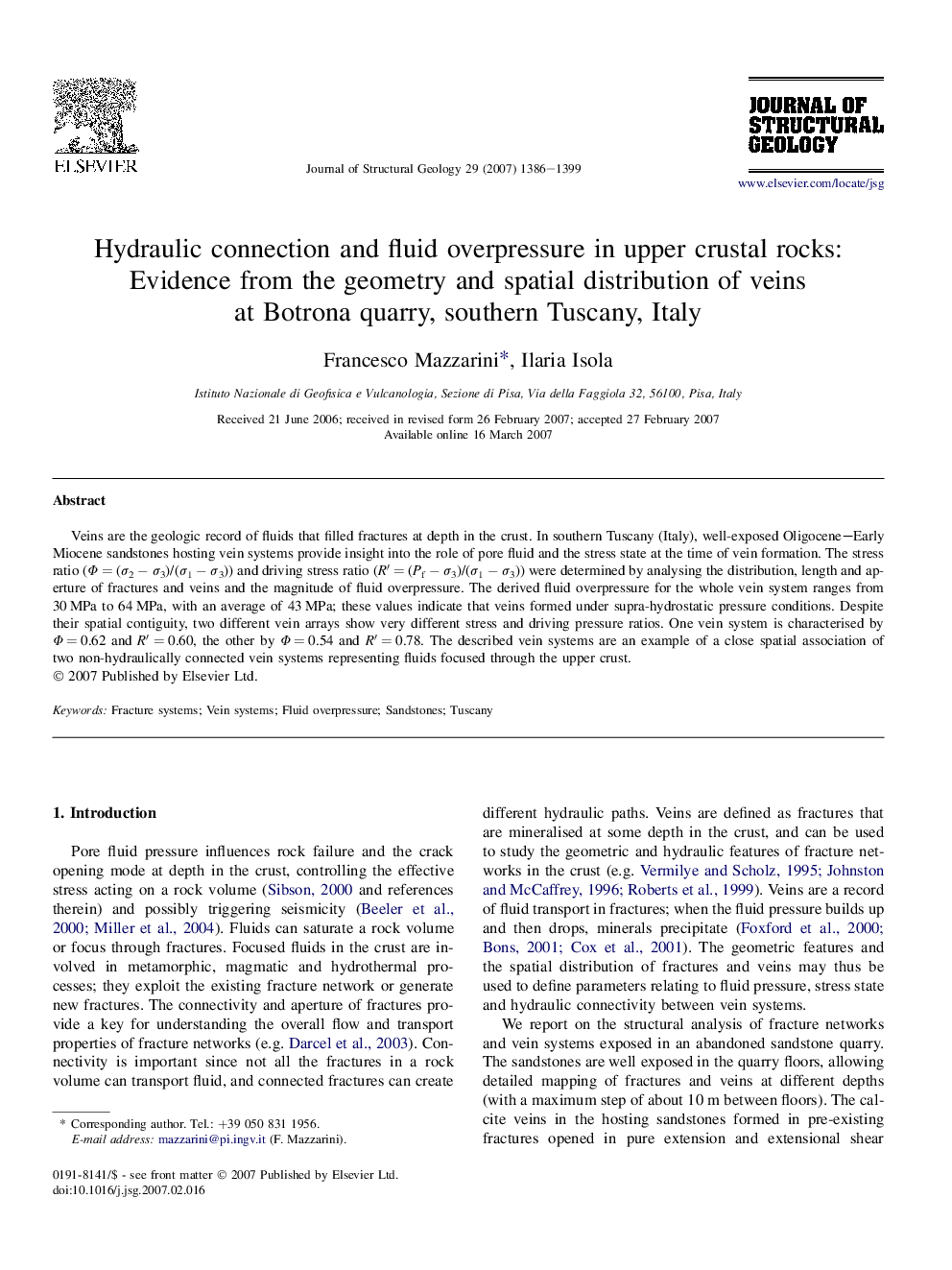| Article ID | Journal | Published Year | Pages | File Type |
|---|---|---|---|---|
| 4734395 | Journal of Structural Geology | 2007 | 14 Pages |
Veins are the geologic record of fluids that filled fractures at depth in the crust. In southern Tuscany (Italy), well-exposed Oligocene–Early Miocene sandstones hosting vein systems provide insight into the role of pore fluid and the stress state at the time of vein formation. The stress ratio (Φ = (σ2 − σ3)/(σ1 − σ3)) and driving stress ratio (R′ = (Pf − σ3)/(σ1 − σ3)) were determined by analysing the distribution, length and aperture of fractures and veins and the magnitude of fluid overpressure. The derived fluid overpressure for the whole vein system ranges from 30 MPa to 64 MPa, with an average of 43 MPa; these values indicate that veins formed under supra-hydrostatic pressure conditions. Despite their spatial contiguity, two different vein arrays show very different stress and driving pressure ratios. One vein system is characterised by Φ = 0.62 and R′ = 0.60, the other by Φ = 0.54 and R′ = 0.78. The described vein systems are an example of a close spatial association of two non-hydraulically connected vein systems representing fluids focused through the upper crust.
